Description
The Vehmic Courts of medieval Germany are steeped in secrecy and mysticism, originating in 13th C Westphalia, and receiving their authority from the Holy Roman Emperor, who granted the authority to administer capital punishment in his name. Much of the courts’ operations were held in secret and its organization was elaborate, with a Freigraf (free count) chosen as president for life, a Stuhlherr (chairman) and lay judges initiated into the court known as “Freischöffen”. The usual court was held during the day and all freemen, whether initiated or not, were admitted. However, only those initiated into the court were allowed to attend secret proceedings. Anyone not a member on being discovered was instantly put to death. Crimes of a serious nature, and those that were deemed unfit for ordinary judicial investigation, such as heresy and witchcraft, fell within the court’s jurisdiction. Only Freischöffen could act as accusers, and they had immense power over life and death, which ultimately led to corruption. By the middle of the 14th century thousands of Freischöffen were scattered throughout Germany, known to each other by secret signs and pass-words, all of them pledged to serve the summons of the secret courts and to execute their judgment. Members were pledged to secrecy on all the symbols and machinations of the court, upon pain of death. The courts were at the height of their power in the 14th and 15th Centuries, but continued to a lessor extent until they were abolished in 1811 by Jerome Bonaparte, king of Westphalia.
Those testifying before the court were to swear an oath upon an oath skull, the skull being a symbol of the oath being a matter of life and death. Surviving oath skulls are quite rare, and those that do survive are usually inscribed with mystic symbols. This skull, however, bears a painted “IHS” (traditional symbol of Christ) with a cross rising from its center and the date “1691” below. Surrounding the skull’s crown is a painted floral wreath. The skull itself is human, lacking the jaw bone, and having a very dark patina, supporting the assumption that the date is accurate. With so much of the activity of the Vehmic Courts being steeped in secrecy and folklore, one can only imagine what this skull was witness to over the centuries.

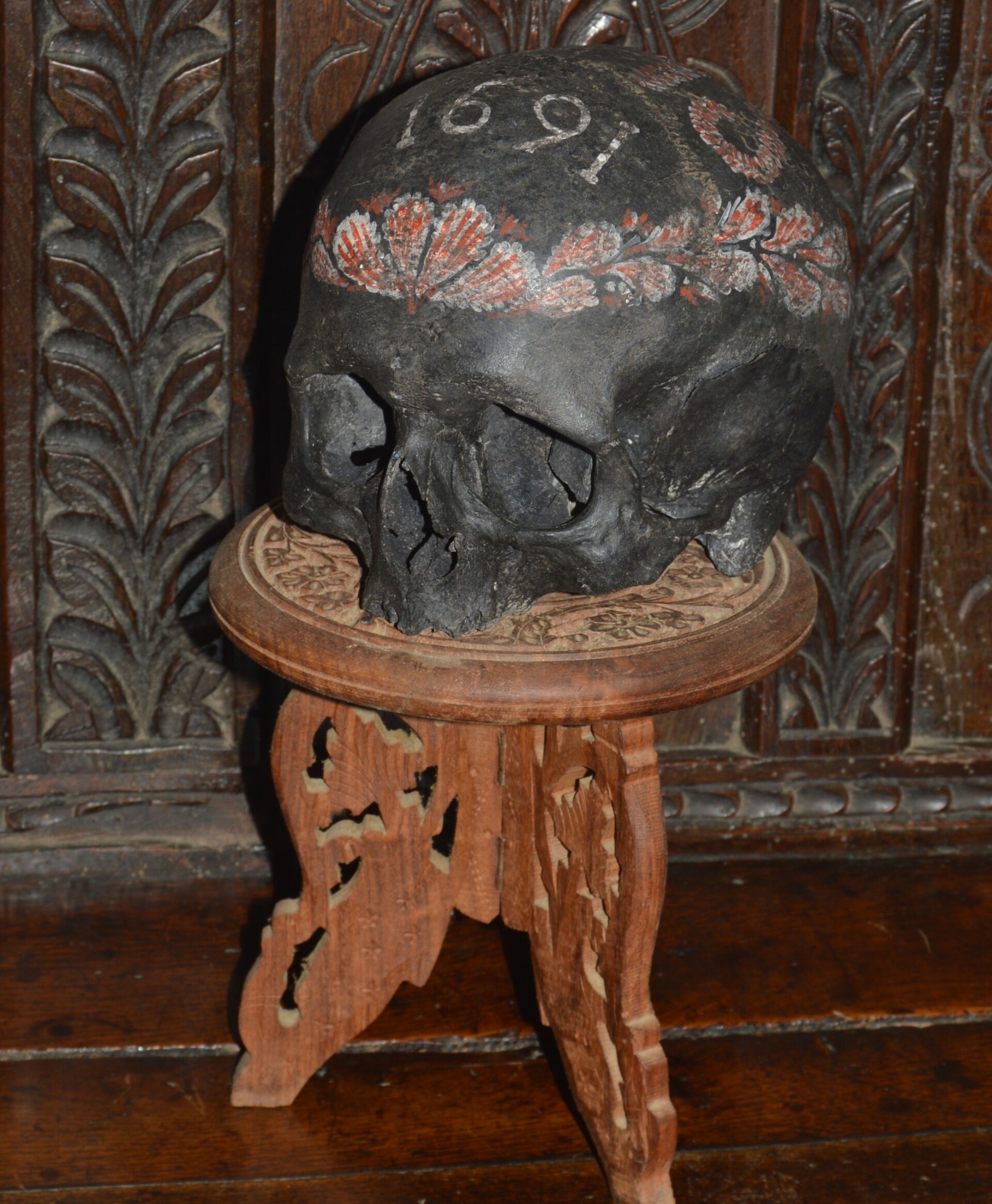
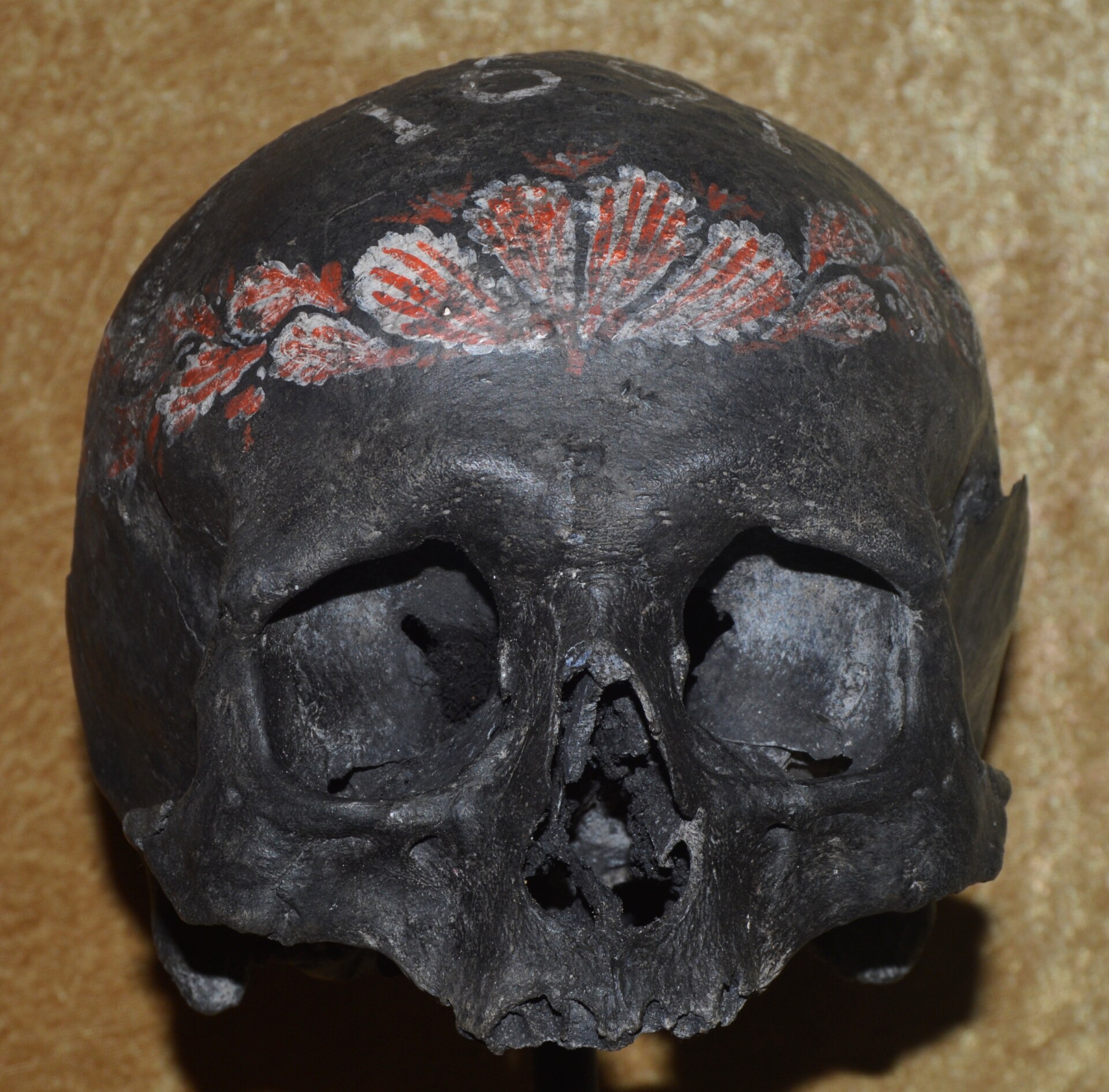
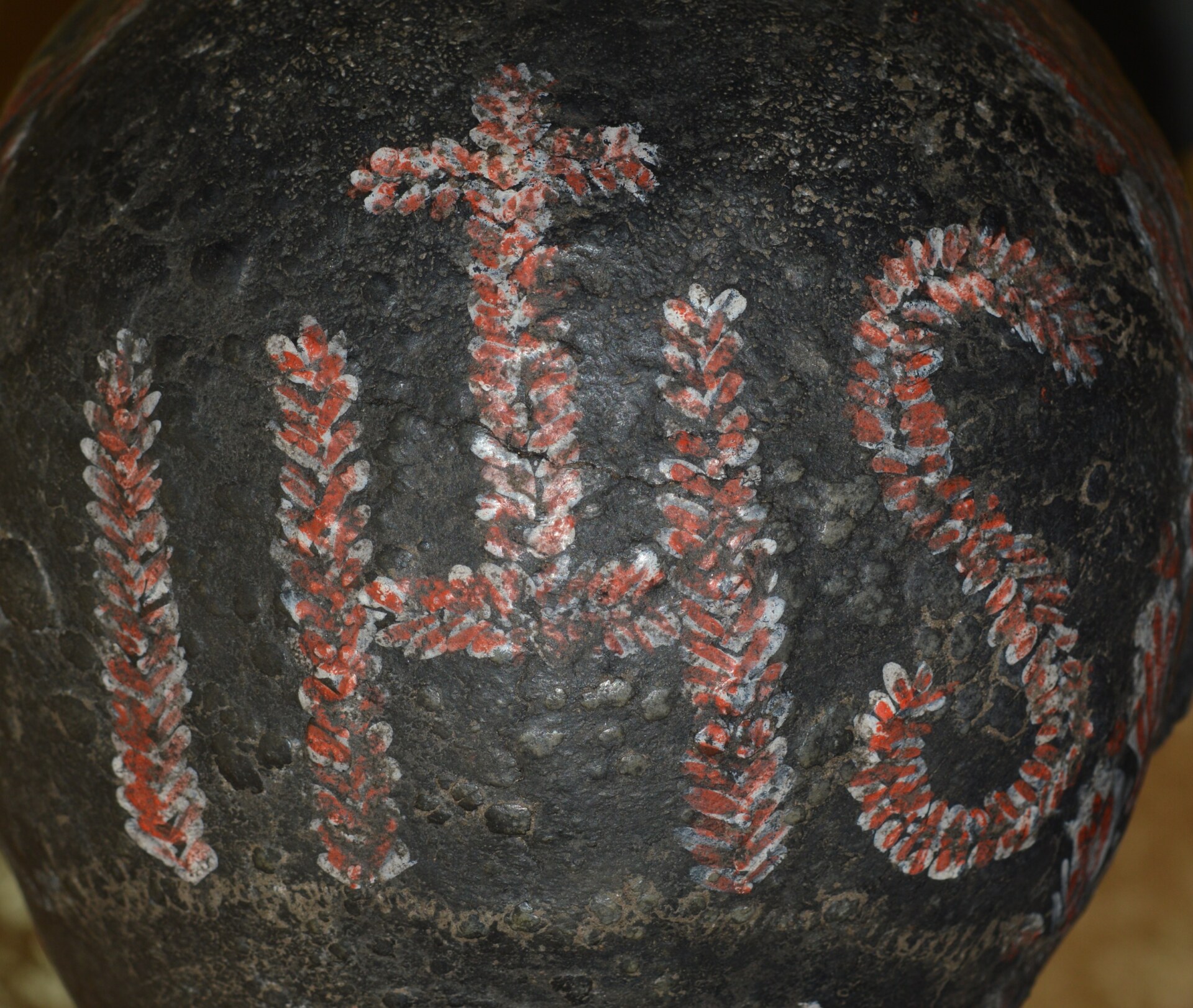
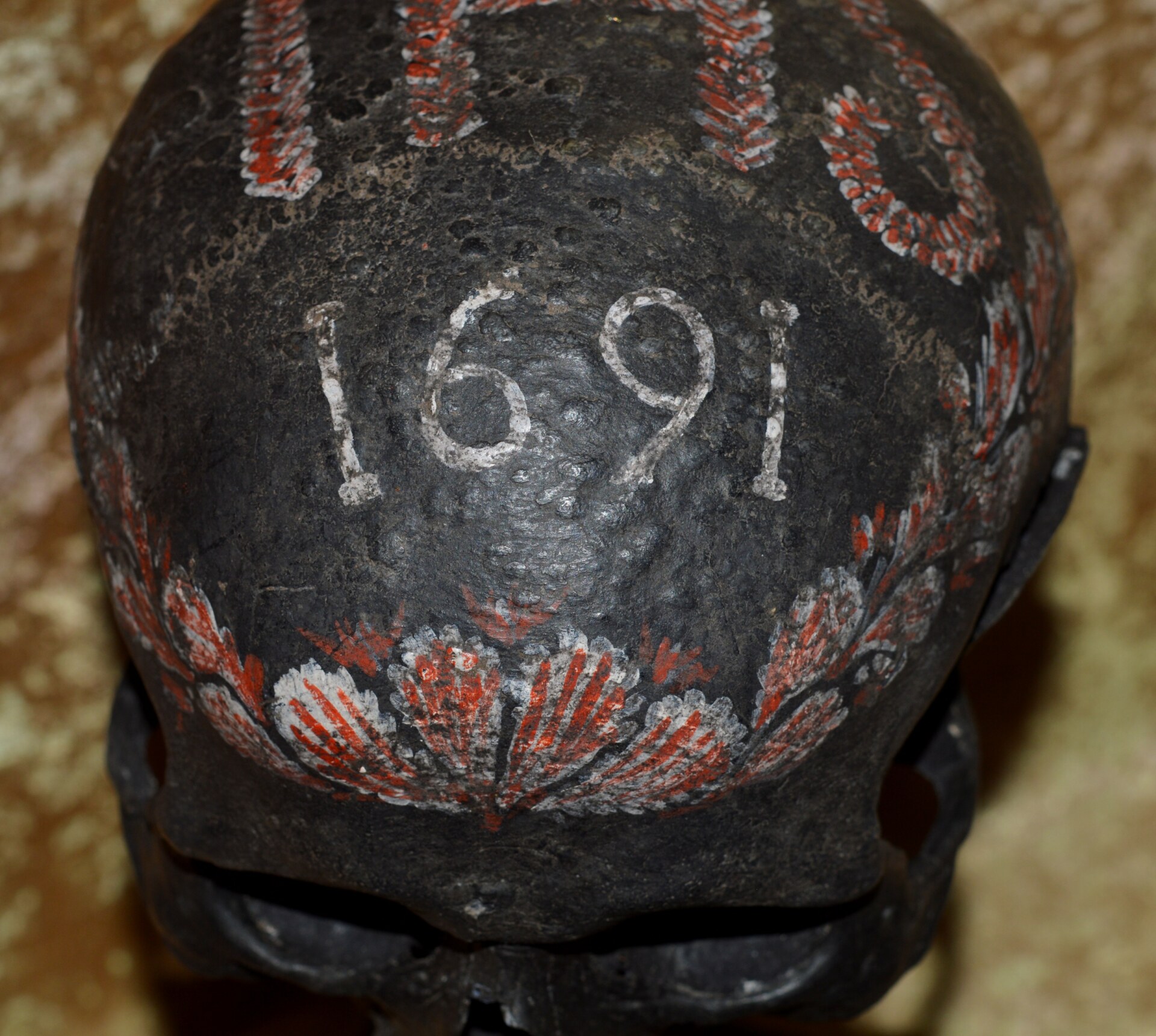
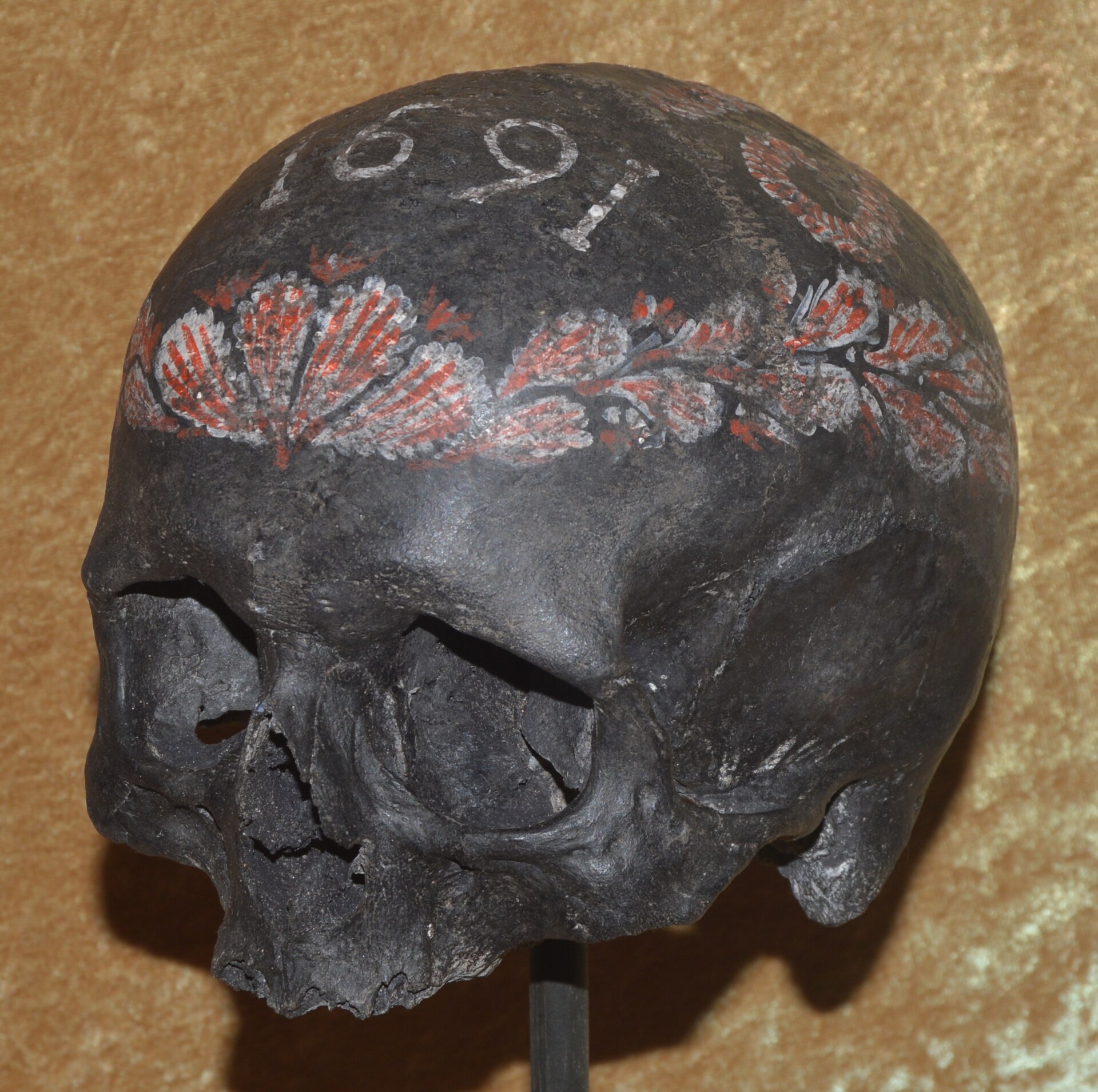
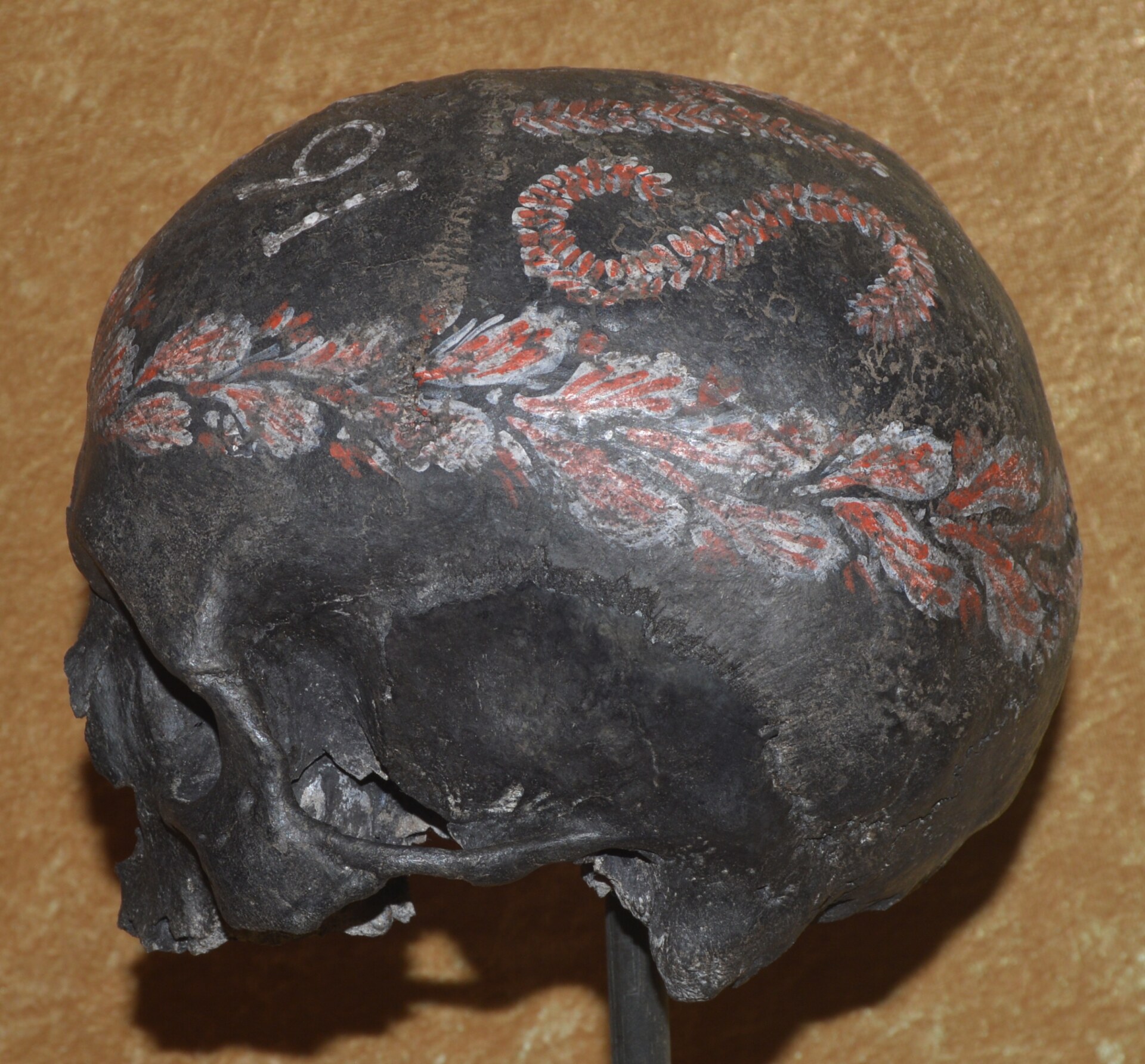
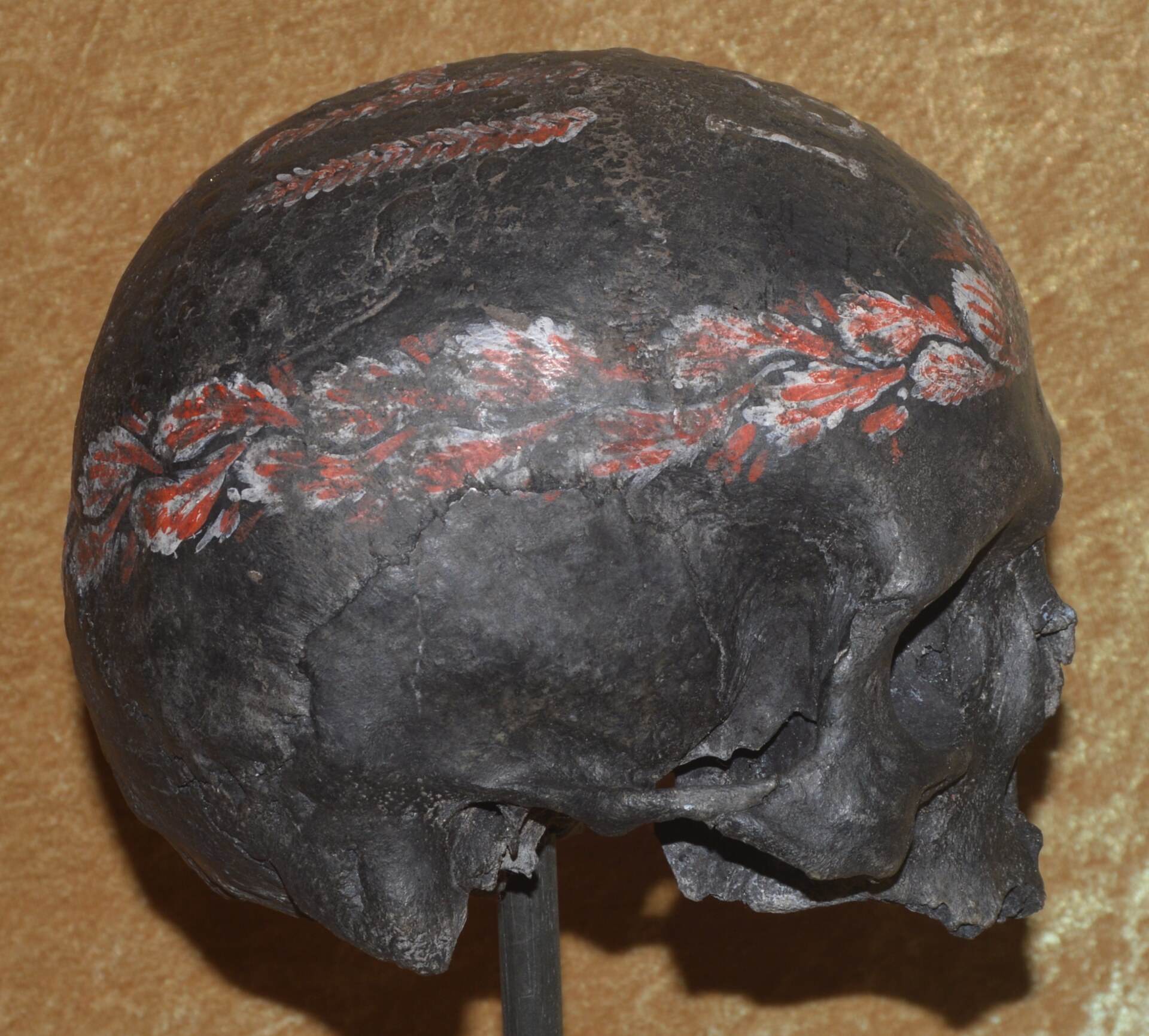
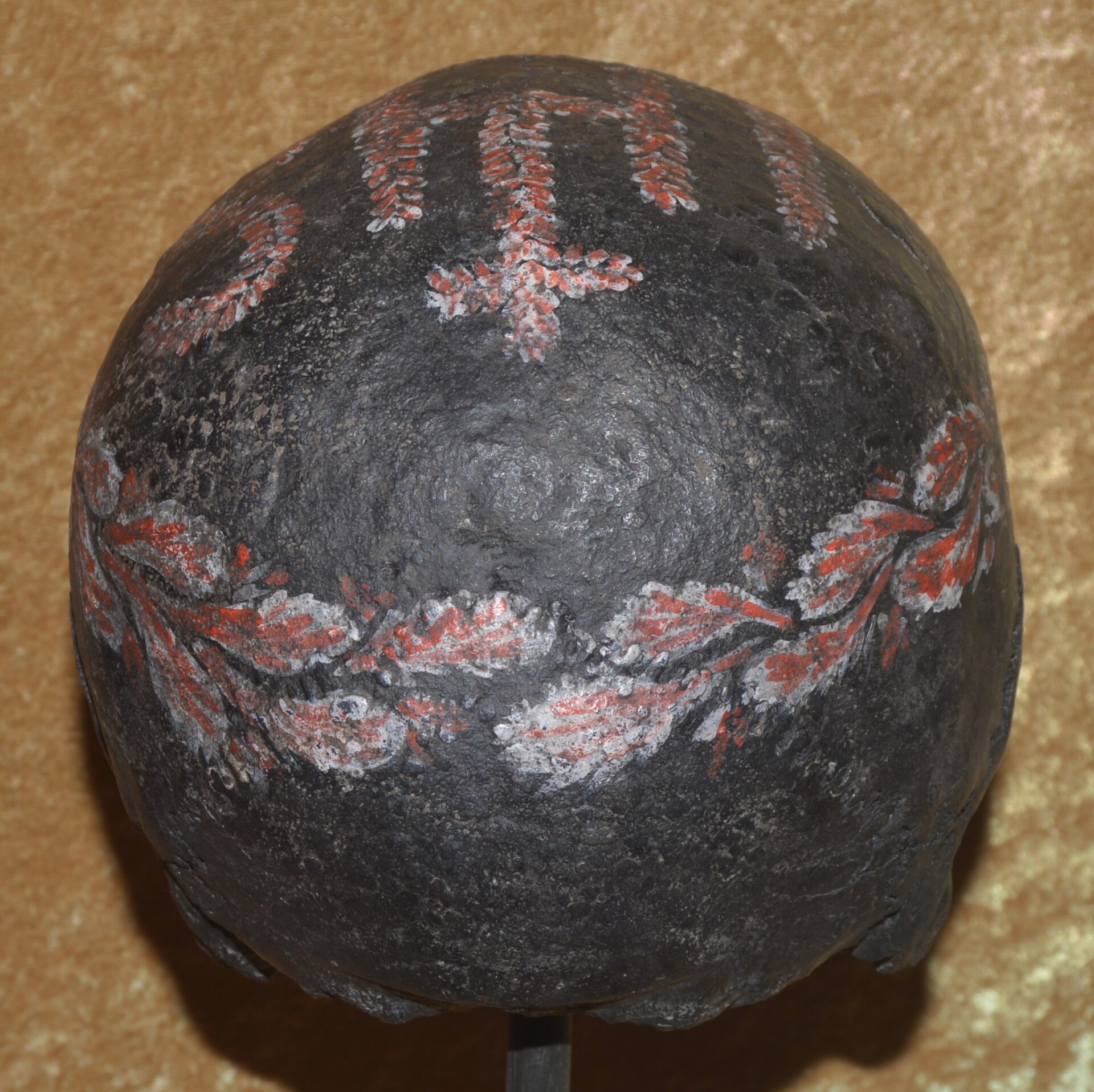
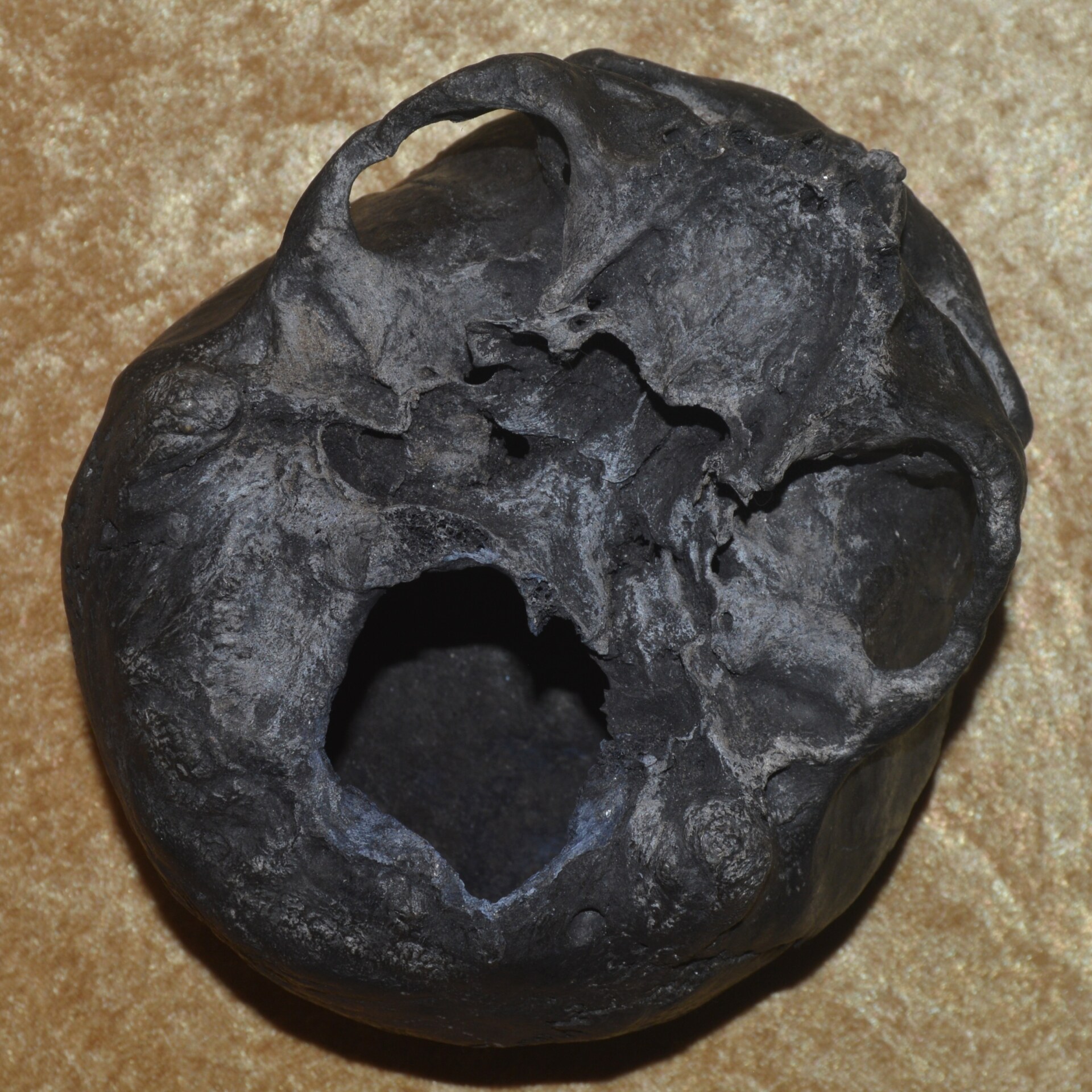
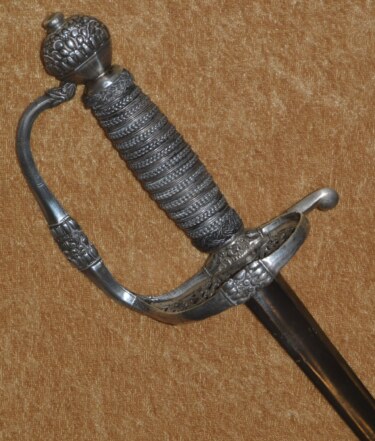 Rare English Silver-Hilted Smallsword, ca. 1680
Rare English Silver-Hilted Smallsword, ca. 1680 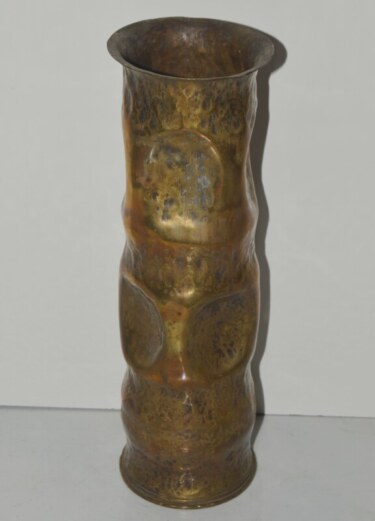 US 75 mm Trench Art
US 75 mm Trench Art  Africa Map by Mercator & Hondius, 1633
Africa Map by Mercator & Hondius, 1633 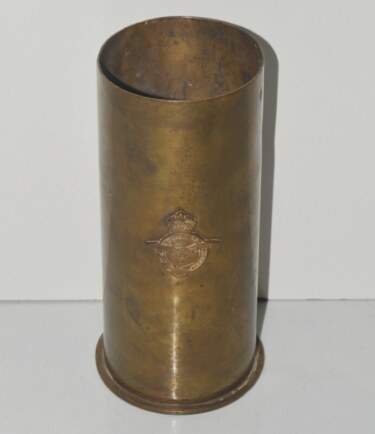 British WWI Royal Flying Corps Trench Art Shell
British WWI Royal Flying Corps Trench Art Shell